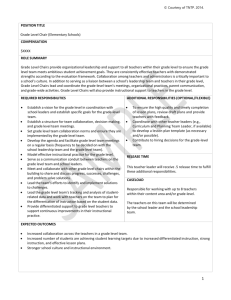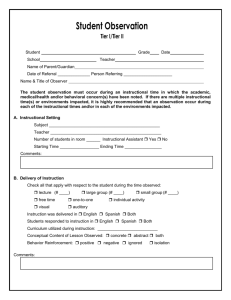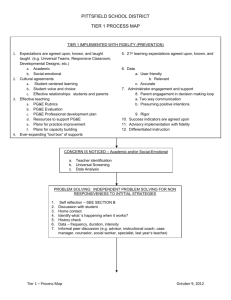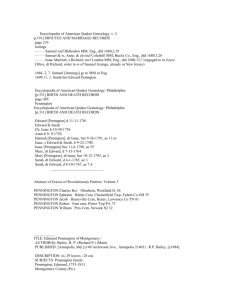How to Teach the Common Core Vocabulary Standards
advertisement
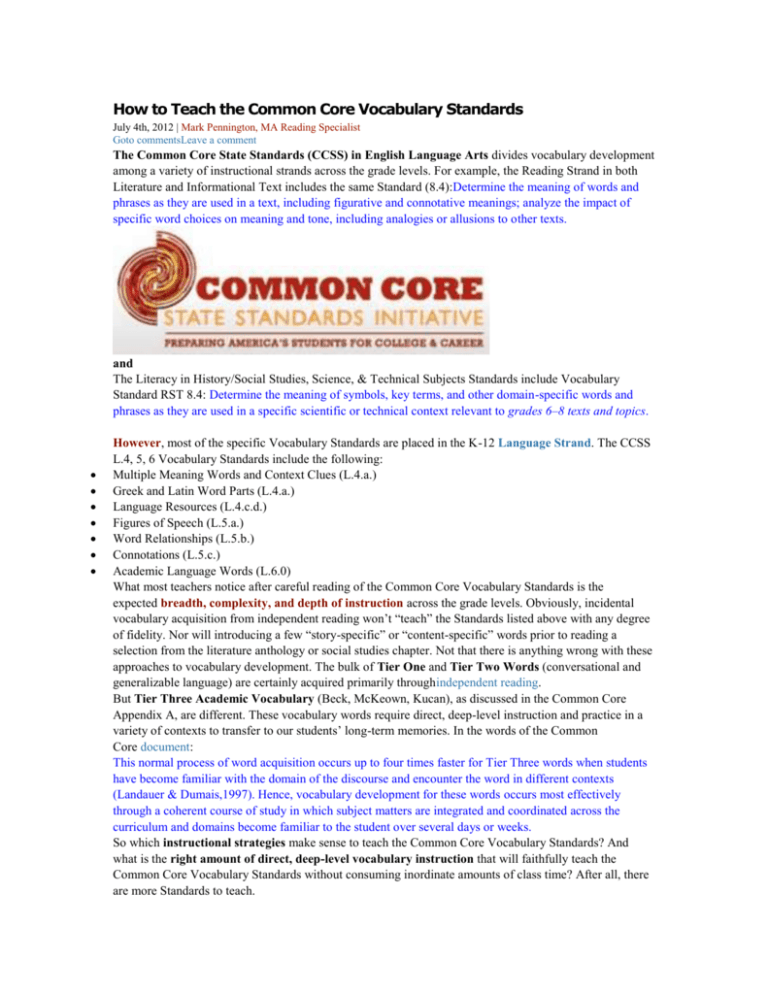
How to Teach the Common Core Vocabulary Standards July 4th, 2012 | Mark Pennington, MA Reading Specialist Goto commentsLeave a comment The Common Core State Standards (CCSS) in English Language Arts divides vocabulary development among a variety of instructional strands across the grade levels. For example, the Reading Strand in both Literature and Informational Text includes the same Standard (8.4):Determine the meaning of words and phrases as they are used in a text, including figurative and connotative meanings; analyze the impact of specific word choices on meaning and tone, including analogies or allusions to other texts. and The Literacy in History/Social Studies, Science, & Technical Subjects Standards include Vocabulary Standard RST 8.4: Determine the meaning of symbols, key terms, and other domain-specific words and phrases as they are used in a specific scientific or technical context relevant to grades 6–8 texts and topics. However, most of the specific Vocabulary Standards are placed in the K-12 Language Strand. The CCSS L.4, 5, 6 Vocabulary Standards include the following: Multiple Meaning Words and Context Clues (L.4.a.) Greek and Latin Word Parts (L.4.a.) Language Resources (L.4.c.d.) Figures of Speech (L.5.a.) Word Relationships (L.5.b.) Connotations (L.5.c.) Academic Language Words (L.6.0) What most teachers notice after careful reading of the Common Core Vocabulary Standards is the expected breadth, complexity, and depth of instruction across the grade levels. Obviously, incidental vocabulary acquisition from independent reading won’t “teach” the Standards listed above with any degree of fidelity. Nor will introducing a few “story-specific” or “content-specific” words prior to reading a selection from the literature anthology or social studies chapter. Not that there is anything wrong with these approaches to vocabulary development. The bulk of Tier One and Tier Two Words (conversational and generalizable language) are certainly acquired primarily throughindependent reading. But Tier Three Academic Vocabulary (Beck, McKeown, Kucan), as discussed in the Common Core Appendix A, are different. These vocabulary words require direct, deep-level instruction and practice in a variety of contexts to transfer to our students’ long-term memories. In the words of the Common Core document: This normal process of word acquisition occurs up to four times faster for Tier Three words when students have become familiar with the domain of the discourse and encounter the word in different contexts (Landauer & Dumais,1997). Hence, vocabulary development for these words occurs most effectively through a coherent course of study in which subject matters are integrated and coordinated across the curriculum and domains become familiar to the student over several days or weeks. So which instructional strategies make sense to teach the Common Core Vocabulary Standards? And what is the right amount of direct, deep-level vocabulary instruction that will faithfully teach the Common Core Vocabulary Standards without consuming inordinate amounts of class time? After all, there are more Standards to teach. 1. 2. 3. 4. 1. 2. 3. How to Teach the Common Core Vocabulary Standards Weekly Instructional Plan: Vocabulary Acquisition and Use (L.4, 5, and 6) Day One Introduce two multiple meaning words and read their definitions out loud. Write two sentences with the multiple meaning words on the board/projector and ask students to identify the use of the words. Direct students to compose their own sentences, using context clues to show the meanings of the words. (L.4.a.) Introduce two Greek and Latin word parts that fit together to form one word. Tell students to write down this word. Ask students to brainstorm which words they know that include each of the word parts. Write their example words on the board. Direct students to guess the part of speech and definition of the word formed from the word parts and to write down their guesses next to their vocabulary word. (L.4.a.) Pass out dictionaries, display an online dictionary, or use other language resources. Teach students to use the guide words to find the word entry, if using a print dictionary. Read the primary definition of the word formed from the Greek and Latin word parts and compare to student guesses. Teach students the different between primary and secondary definitions and read the secondary definition to compare. Teach students the symbols used from syllable division, accents, and parts of speech. Direct students to divide their vocabulary word into syllables with slashes (/), mark the primary accent (´), write the abbreviated part of speech, and write the definition that best matches the Greek and Latin word parts. Write the answers on the board and tell students to edit their answers as necessary. (L.4.c.d.) List a grade-appropriate figure of speech on the board/projector and explain the literal image of the expression. Tell students to write down the figure of speech. Ask students for their explanations and interpretations of the figurative meaning of the expression. Validate the correct student responses or provide the correct meaning as necessary. Tell students to paraphrase the figurative meaning next to the figure of speech. (L.5.a.) Day Two Introduce two grade-level vocabulary words that have special denotative relationships and read their definitions out loud. Direct students to compose a compound sentence with a connecting transition word or phrase to define one word in terms of the other, using context clues. (L.5.b.) Introduce two grade-level words that have special connotative relationships and read their definitions out loud. Explain the difference between denotation (dictionary definition) and connotation (definition in context). Explain that words have different shades of meaning when used in different situations. Explain what a spectrum is, using a rainbow as an example. Direct students to draw a four-word spectrum in which they place the two vocabulary words in connotative relationship with two already-known words with related meanings. (L.5.c.) Introduce two academic language words and read their definitions out loud. Direct students to draw two vocabulary four-squares, one for each academic language word. Quadrants are labeled “Key Words,” “Similar to…,” “Different than…,” and “Example.” Tell students to analyze the meaning of the academic vocabulary words by completing each square. (L.6.0) The author of this article, Mark Pennington, has developed targeted Vocabulary Worksheets(Click to see) to incorporate this twice-per-week instructional plan. These 56 Vocabulary Worksheets are one instructional component of the Grades 4-12 language program series: Teaching the Language Strand (of the Common Core State Standards) ©2012 Pennington Publishing. This comprehensive curriculum provides the resources teachers need to teach grade-level Standards and to differentiate instruction for their diverse learners in 60-90 minutes per week. Previews of the grade-level teacher guides and student workbooks are available on the author’s website. Be Sociable, Share! Reading, Spelling/VocabularyCommon Core, Common Core State Standards, Common Core Vocabulary, how to teach the vocabulary standards, language standards, Language Strand, vocabulary standards

